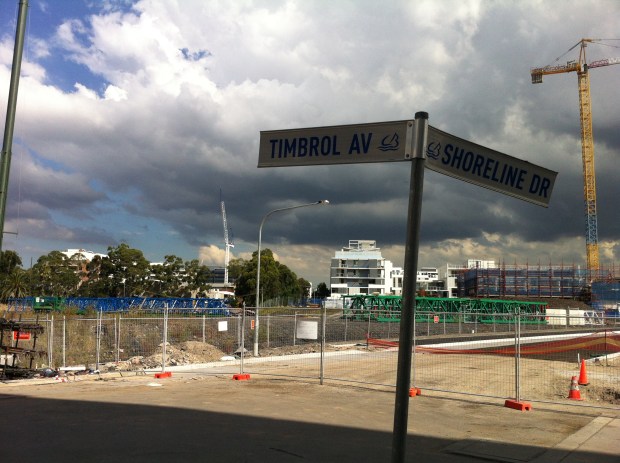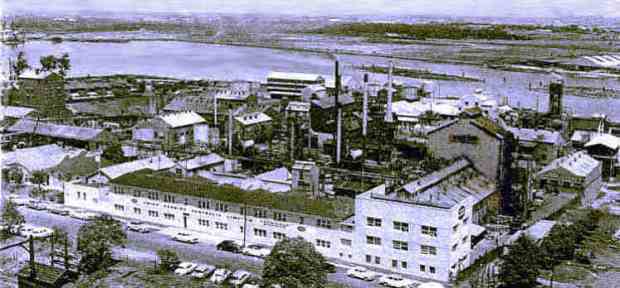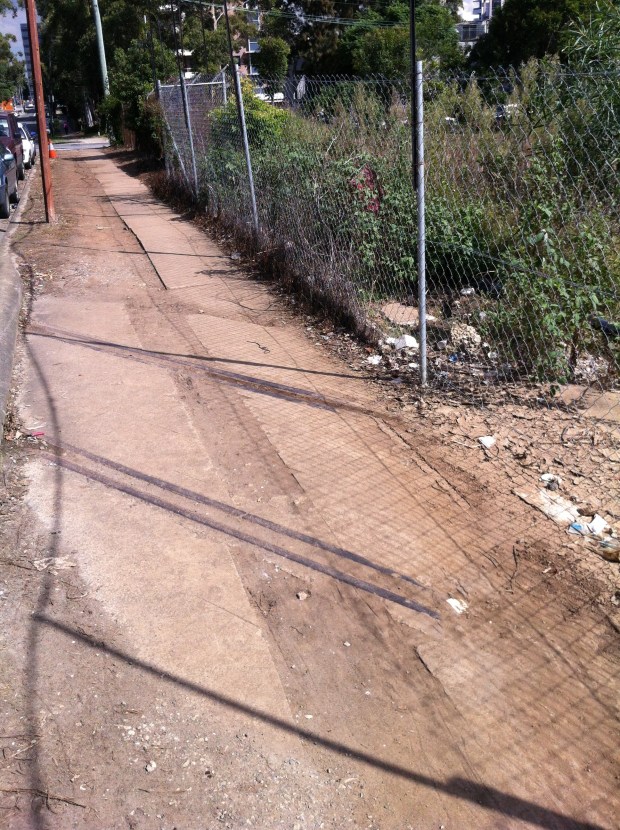Following on from the Homebush Abattoir is the story of Rhodes, NSW. ‘We’re judged by the company we keep’ has never been truer than in the case of Rhodes, an industrial suburb closely identified with chemicals for most of the 20th century. The winning of the 2000 Olympic Games and subsequent renewal of the former abattoir site at Homebush Bay forced the NSW Government to remediate Rhodes, on the other side of the bay. It was hoped the suburb would be reborn as heavy residential by 2000, but this goal has still not been achieved. The primary reason is this site:
Timbrol was Australia’s first major organic chemical manufacturer, and was established here on Walker Street in 1928. Chemicals manufactured by Timbrol between 1928 and 1957 include chlorine, weed fungicide, and the insecticides DDT and DDE. To commemorate this achievement, a neighbouring street has been named after Timbrol:
In 1957, Timbrol merged with the American chemical concern Union Carbide to form Union Carbide Australia. Union Carbide had a reputation as an innovator within the chemical manufacturing industry. Facing competition from the neighbouring CSR plant, Union Carbide stepped up production of existing chemical products and created many new ones. During the Vietnam War, Union Carbide produced Agent Orange at their Rhodes site.
Whenever Union Carbide would reclaim land from Homebush Bay, it would do so by dumping toxic waste and building over it. This method was extended to the Allied Feeds site further up Walker Street. In 1997, Greenpeace found 36 rusting drums of toxic waste on the former Union Carbide site.
Faced with declining demand, diminishing returns and increasing competition, Union Carbide abandoned its Australian operations entirely in 1985. They were allowed to leave without conducting any kind of cleanup of the Rhodes site. Between 1988 and 1993, the NSW Govt began remediation attempts with the intention of using Rhodes as an Olympic village for the 2000 Sydney Games, but it was only in 2005, with the onset of private residential construction on the sites, did any serious remediation work take place. Many blocks of units were completed between 2005 and 2011, but remained empty as the ongoing cleanup work made the area too toxic to live in. Remediation was completed in early 2011, and construction has resumed.
Homebush Bay remains toxic – swimming and fishing are prohibited, and any fish caught in the bay are too poisonous to eat. The remediation work by Meriton and Thiess and has supposedly made the area safe to live in, but only time will tell.
UPDATE: It’s one year later. Is it safe yet? Find out.















Nice site. Found this hi-res aerial shot of Rhodes from the 1950’s http://www.ozsite.com.au/pics/tulloch/tullochs.jpg related to your 29.3.12 post